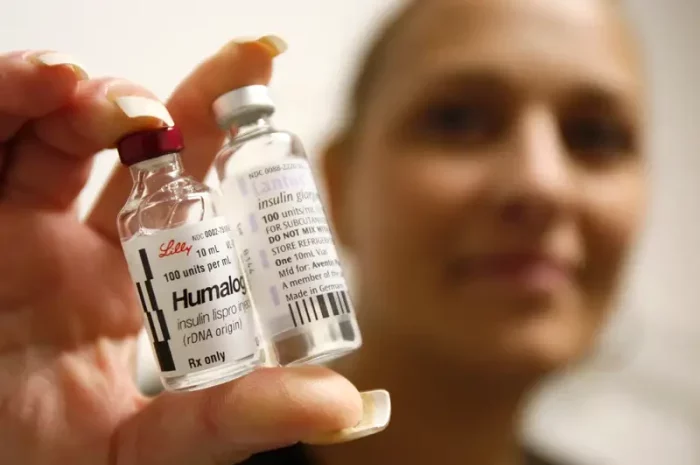Pregnancy is a transformative journey marked by numerous physiological changes, including fluctuations in hormonal levels, metabolic adaptations, and alterations in insulin sensitivity. Amidst these intricate processes, some women may experience elevated glucose levels during pregnancy, a condition known as gestational diabetes mellitus (GDM).
In this comprehensive exploration, we delve into the multifaceted factors that contribute to high glucose levels during pregnancy, shedding light on the underlying causes, risk factors, and implications for maternal and fetal health.
Understanding Gestational Diabetes Mellitus (GDM)
Gestational diabetes mellitus (GDM) is a form of diabetes that develops during pregnancy, typically in the second or third trimester, and is characterized by impaired glucose tolerance and elevated blood sugar levels. While the exact cause of GDM is not fully understood, several interrelated factors contribute to its pathogenesis, including:
1. Hormonal Changes:
Pregnancy is associated with dynamic fluctuations in hormonal levels, including increases in placental hormones such as human placental lactogen (hPL), estrogen, and progesterone. These hormones play essential roles in supporting fetal growth and development but can also induce insulin resistance in maternal tissues, leading to impaired glucose uptake and utilization.
2. Insulin Resistance:
Insulin resistance, a hallmark feature of GDM, occurs when maternal tissues become less responsive to the actions of insulin, the hormone responsible for regulating blood sugar levels. Insulin resistance is exacerbated by the hormonal milieu of pregnancy, particularly in the presence of obesity, excess weight gain, or pre-existing insulin resistance.
3. Genetic Predisposition:
Genetic factors play a significant role in the development of GDM, with a family history of diabetes or a personal history of GDM increasing the risk of developing the condition.
Specific genetic variants related to insulin secretion, glucose metabolism, and pancreatic function may predispose individuals to GDM, although the precise genetic mechanisms remain under investigation.
4. Obesity and Excess Weight Gain:
Obesity and excessive weight gain during pregnancy are established risk factors for GDM, as adipose tissue produces hormones and cytokines that promote insulin resistance and inflammation.
Maternal obesity is associated with adipose tissue dysfunction, dysregulation of adipokine secretion, and alterations in lipid metabolism, all of which contribute to insulin resistance and glucose intolerance.
5. Previous History of GDM:
Women with a history of GDM in a previous pregnancy are at increased risk of developing GDM in subsequent pregnancies, highlighting the role of prior obstetric history as a risk factor for the condition. Recurrence of GDM may reflect underlying genetic susceptibility, metabolic factors, or lifestyle influences that persist across pregnancies.
6. Ethnicity and Race:
Ethnicity and race influence the risk of developing GDM, with certain populations, including Hispanic, African American, Asian, and Indigenous women, exhibiting higher prevalence rates compared to Caucasian women.
Ethnic disparities in GDM prevalence may be attributed to genetic, cultural, socioeconomic, and environmental factors that influence metabolic health and diabetes risk.
Clinical Implications and Management Considerations
The identification and management of high glucose levels during pregnancy are essential for promoting maternal and fetal health and reducing the risk of adverse pregnancy outcomes. Women with GDM require comprehensive prenatal care, including:
1. Early Screening and Diagnosis:
Screening for GDM typically occurs between 24 and 28 weeks of gestation, although women with risk factors may be screened earlier in pregnancy.
Diagnostic testing involves an oral glucose tolerance test (OGTT), which evaluates maternal glucose levels before and after consuming a standardized glucose solution.
2. Nutritional Counseling:
Dietary management plays a central role in the management of GDM, with a focus on carbohydrate moderation, portion control, and balanced meal planning.
Women with GDM are advised to follow a diet rich in nutrient-dense foods, including fruits, vegetables, whole grains, lean proteins, and healthy fats, while limiting intake of refined carbohydrates, sugary beverages, and processed foods.
3. Blood Glucose Monitoring:
Regular monitoring of blood glucose levels is essential for women with GDM to assess glycemic control and adjust treatment as needed.
Self-monitoring of blood glucose (SMBG) allows women to track their glucose levels throughout the day and make informed decisions about dietary choices, physical activity, and insulin therapy.
4. Physical Activity:
Regular physical activity is recommended for women with GDM to improve insulin sensitivity, control weight gain, and promote overall well-being during pregnancy.
Moderate-intensity exercise, such as walking, swimming, or prenatal yoga, is safe and beneficial for most pregnant women and can be incorporated into daily routines with guidance from healthcare providers.
5. Medical Management:
In cases of inadequate glycemic control despite lifestyle modifications, medical management may be indicated to achieve target blood glucose levels and reduce the risk of maternal and fetal complications.
Insulin therapy is the primary pharmacological intervention for GDM, although oral medications such as metformin or glyburide may be considered in select cases.
Conclusion
In conclusion, high glucose levels during pregnancy, manifested as gestational diabetes mellitus (GDM), stem from a complex interplay of hormonal, metabolic, genetic, and lifestyle factors.
By understanding the underlying causes and risk factors for GDM, healthcare providers can implement targeted strategies for screening, diagnosis, and management to optimize maternal and fetal outcomes.
Through comprehensive prenatal care, including nutritional counseling, blood glucose monitoring, physical activity, and medical management when necessary, women with GDM can navigate their pregnancy journey with confidence and promote the health and well-being of themselves and their babies.
By nurturing health and well-being during pregnancy, we can empower women to embrace the transformative journey of motherhood with resilience, vitality, and joy.



























